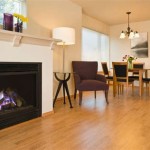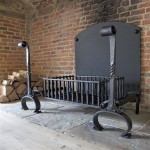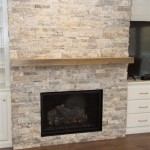Gas Fireplace Insert Dimensions: A Comprehensive Guide
Selecting a gas fireplace insert involves careful consideration of various factors, one of the most critical being the insert's dimensions. Understanding the specific measurements required for a seamless and efficient installation is paramount to ensuring optimal performance and aesthetic appeal. Neglecting to accurately assess the existing fireplace opening and the insert's dimensions can lead to costly rework, reduced heating efficiency, and an unsatisfactory visual outcome. This article provides a comprehensive guide to navigating the complexities of gas fireplace insert dimensions, covering essential measurements, installation considerations, and factors impacting the overall sizing process.
Gas fireplace inserts are designed to be retrofitted into existing masonry or prefabricated wood-burning fireplaces. Their primary function is to provide efficient and controllable heat while offering the aesthetic appeal of a traditional fire. Unlike freestanding gas fireplaces, inserts are enclosed units, requiring precise fitting within the confines of an existing firebox. This constraint necessitates meticulous attention to detail when evaluating dimensions.
The dimensions of a gas fireplace insert influence not only its physical fit within the firebox but also its heating capacity. A larger insert may provide greater heat output, but only if the firebox is appropriately sized to accommodate it. Conversely, an undersized insert may fail to adequately heat the intended space, even if it fits perfectly. Therefore, a comprehensive understanding of dimensional requirements is crucial for achieving both optimal performance and aesthetic integration.
Key Dimensions to Consider
Accurately assessing the dimensions of both the existing fireplace opening and the prospective gas fireplace insert is the cornerstone of a successful installation. Several key measurements must be meticulously recorded and compared to ensure compatibility. These dimensions are typically specified by the manufacturer and are often referenced in product specifications and installation manuals.
Fireplace Opening Width: This refers to the horizontal distance across the front of the fireplace opening. It's essential to measure the width at both the front and the back of the opening, as fireboxes can sometimes taper inward. The narrowest width measurement should be used to determine the maximum permissible width of the gas fireplace insert.
Fireplace Opening Height: This measurement represents the vertical distance from the hearth to the top of the fireplace opening. Similar to the width measurement, the height should be measured at the front and back of the opening. The smaller of the two measurements should be used to ensure the insert will fit comfortably without requiring modification to the existing firebox.
Fireplace Depth: The depth of the fireplace is the distance from the front of the firebox to the back wall. This is a crucial measurement, as it dictates how far the insert will protrude into the room. Insufficient depth can prevent the insert from fitting fully into the firebox, while excessive depth may leave an unsightly gap between the insert and the fireplace surround.
Hearth Dimensions: The hearth is the non-combustible area extending outward from the fireplace opening. Local building codes often specify minimum hearth dimensions to protect flooring from sparks and embers. When installing a gas fireplace insert, it's essential to ensure the existing hearth meets these requirements. If it doesn't, the hearth may need to be extended or modified to comply with safety regulations.
Insert Width, Height, and Depth: These are the external dimensions of the gas fireplace insert itself, as provided by the manufacturer. It is imperative to consult the manufacturer's specifications and installation manual to obtain accurate measurements. These dimensions must be smaller than the corresponding dimensions of the fireplace opening to allow for proper installation and ventilation.
Clearances to Combustibles: Gas fireplace inserts generate heat, and it's crucial to maintain adequate clearance between the insert and any combustible materials, such as wood framing, mantels, and drywall. These clearances are typically specified by the manufacturer and must be strictly adhered to prevent fire hazards. Failure to comply with these clearances can result in property damage and potential injury.
Factors Influencing Dimension Selection
Selecting the appropriate gas fireplace insert dimensions is not solely based on the physical size of the firebox. Several other factors influence the optimal choice, including the desired heating capacity, the fireplace's venting system, and aesthetic preferences. These factors should be carefully considered in conjunction with the dimensional constraints of the existing fireplace.
Heating Capacity (BTUs): The heating capacity of a gas fireplace insert is measured in British Thermal Units (BTUs). The appropriate BTU rating depends on the size of the room to be heated, the home's insulation levels, and the local climate. A larger room with poor insulation in a cold climate will require a higher BTU rating than a smaller, well-insulated room in a mild climate. Understanding the heating needs of the space is crucial for selecting an insert with adequate heating capacity.
Venting System: Gas fireplace inserts require a venting system to safely exhaust combustion gases. The type of venting system required depends on the insert model and local building codes. Options include direct vent, natural vent (B-vent), and vent-free (although vent-free models are subject to stricter regulations and may not be permitted in all jurisdictions). The existing fireplace's venting system may need to be modified or upgraded to accommodate the new insert. The dimensions and configuration of the vent system will influence the overall installation process and may necessitate adjustments to the fireplace opening.
Aesthetic Considerations: While functionality is paramount, the aesthetic appearance of the gas fireplace insert is also a significant consideration. Inserts are available in a variety of styles, finishes, and designs. The desired aesthetic should be factored into the selection process, ensuring the insert complements the existing décor and seamlessly integrates with the fireplace surround. The visible portion of the insert, including the surround or trim kit, should be proportionate to the fireplace opening and the overall room size.
Manufacturer Specifications: Always consult the manufacturer's specifications and installation manual for detailed dimensional requirements. These documents provide precise measurements, clearance requirements, and installation instructions specific to the model. Deviating from the manufacturer's recommendations can void the warranty and compromise the safety and performance of the insert.
Local Building Codes: Gas fireplace insert installations are subject to local building codes and regulations. These codes often specify minimum hearth dimensions, venting requirements, and clearance to combustible materials. It is essential to obtain the necessary permits and ensure the installation complies with all applicable codes. Consultation with a qualified building inspector or HVAC professional is recommended to ensure compliance.
Potential Issues Arising from Incorrect Dimensions
Failing to accurately assess gas fireplace insert dimensions can lead to a range of problems, impacting both the installation process and the long-term performance of the unit. Addressing these issues after installation can be costly and time-consuming. Therefore, meticulous planning and precise measurements are essential to avoid potential complications.
Fit Issues: The most obvious consequence of incorrect dimensions is a misfit between the insert and the fireplace opening. An insert that is too large will not fit into the firebox, requiring costly and potentially dangerous modifications to the fireplace structure. Conversely, an insert that is too small may leave unsightly gaps and reduce heating efficiency.
Ventilation Problems: Improperly sized ventilation systems can lead to inadequate exhaust of combustion gases, resulting in carbon monoxide buildup and potential health hazards. Insufficient venting can also reduce the efficiency of the insert, leading to incomplete combustion and reduced heat output.
Reduced Heating Efficiency: An undersized insert may not provide adequate heat for the intended space, leading to discomfort and increased energy costs. An oversized insert, on the other hand, may cycle on and off frequently, resulting in inefficient operation and temperature fluctuations.
Safety Hazards: Insufficient clearance to combustible materials can create a significant fire hazard. Overheating of surrounding structures can lead to ignition and property damage. Improper installation can also compromise the structural integrity of the fireplace and chimney.
Warranty Voidance: Deviating from the manufacturer's specifications and installation instructions can void the warranty on the gas fireplace insert. This can leave the homeowner responsible for any repair costs resulting from improper installation or use.
In summary, the dimensions of a gas fireplace insert are not merely a matter of physical fit; they are integral to the safe and efficient operation of the unit. Precise measurements, careful planning, and strict adherence to manufacturer specifications and local building codes are essential for a successful installation. Seeking guidance from a qualified HVAC professional or building inspector can help ensure a safe and properly functioning gas fireplace insert.

Superior 32 Inch Medium Direct Vent Gas Insert Dri2032 North Country Fire

616 Deluxe Ember Glo Made In America Fireplace Xtrordinair

Lopi 430 Gas Fireplace Insert Hearth And Home Distributors Of Utah Llc

Napoleon Gdi44 Gas Insert Fireplacepro Fireplace Dimensions Vented

Lopi Stoves Radiant Plus Large Gas Fireplace Insert Don S Stove

Lopi 616 Gas Fireplace Insert Hearth And Home Distributors Of Utah Llc

White Mountain Hearth By Empire Comfort Systems Direct Vent Gas Fireplace Insert Loft

The Langley Gas Fireplace 36l Shallow Linear

The Proper Way To Measure Dimensions Of A Fireplace

S Fireplace Dimensions Gas Insert








